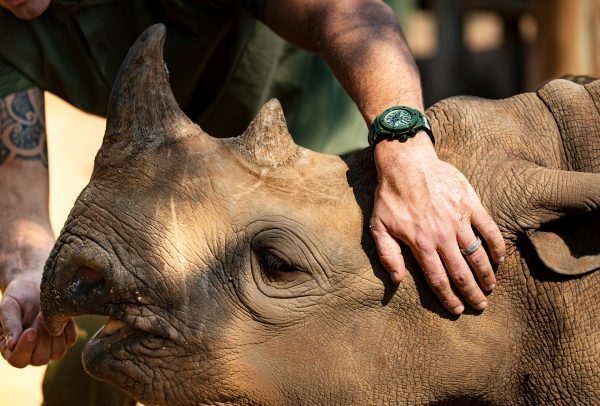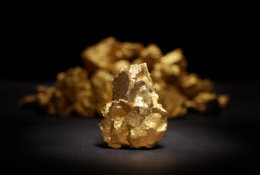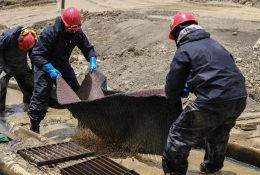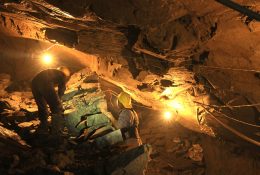In early June, Rolex announced the five laureates of the 2021 Rolex Awards for Enterprise, all pioneers who are “tackling some of the world’s most intractable challenges with brilliant ideas and hard work.” Created in 1976 for the 50th anniversary of the Oyster, the first waterproof watch, the programme supports “individuals with innovative projects that improve life on the planet, expand knowledge, propose solutions to major challenges, or preserve our natural and cultural heritage for future generations.” The chosen projects include that of Rinzin Phunjok Lama to enlist local people in the Himalaya region to safeguard dwindling wild animal populations, another by Luiz Rocha to study the Indian Ocean’s deep-sea coral reefs and make a case for the conservation of an environment unknown to humans, and that of Gina Moseley who is organising the first expedition to the world’s northernmost caves to gain new insights into climate change in the Arctic.

Rolex is an old hand at serving environmental causes through its Perpetual Planet initiative, which encompasses Sylvia Earle’s Mission Blue programme for ocean conservation, and through a longstanding partnership with National Geographic to use science to improve our understanding of climate change. But what about the rest of the watch industry? How does it compare? For most brands, this has been a slow awakening. The main focus of attention remains precious metals and precious stones, and efforts to eliminate from the supply chain conflict diamonds and artisanal gold extracted in disastrous conditions for the miners themselves and the environment. Despite the need for continued vigilance and reinforced controls, undeniable progress has been made, although concerns remain. Swiss daily Le Temps recently ran an article on the rubies that are still being imported into Switzerland from Myanmar, where trade in these stones benefits the military that seized power after overthrowing the elected government of Aung San Suu Kyi, last February. Here, too, brands are taking action: Cartier and Piaget stopped sourcing gemstones from Myanmar in 2017, as did Gübelin immediately following the coup.
Watch brands have embarked on their “green revolution”.
Alongside attention paid to sourcing, brands are embarking on their “green revolution”, shown by the growing number of partnerships with NGOs, scientific study programmes and expeditions. And where better to begin than “at home”, with eco-responsible buildings that blend sympathetically with their surroundings, are carbon neutral, make use of natural and recycled construction materials, run off solar, geothermal or hydro- energy, incorporate light and temperature sensors, or recover heat and rainwater. Audemars Piguet led the way with its new manufacturing plant, opened in 2009 and built to Minergie standards. Rolex followed suit with its site in Biel/Bienne, as did Panerai and its energy-efficient facility in Neuchâtel. When building its Manufakturzentrum, opened in 2018, IWC worked with local companies to reduce its environmental footprint. Omega has a new wood-frame production centre in Biel/Bienne. And these are just some examples in a Swiss watch industry that has had to “make room” these past years to adapt production capacity.

Conscious that they need to look further than their own backyard, watchmakers have found more ambitious outlets for their environmental commitment. First to benefit are the oceans: any brand with ties to the sea, sailing or diving is partner to one or other organisation that is active in ocean conservation or involved in raising awareness of marine biotopes. Alongside Rolex with Mission Blue are Breguet (Race for Water), Breitling (Ocean Conservancy), Omega (GoodPlanet Foundation), Oris (Reef Restoration Foundation), Blancpain (Blancpain Ocean Commitment) and others. Partnerships of this kind are commonplace in the luxury industry, providing ample opportunity for brands to publicise their efforts in press releases and other corporate communication. Again, they aren’t enough. The planet has declared a state of climate emergency and habitat destruction is accelerating species extinction. Companies that are serious about environmental protection need to raise the stakes and consider not just carbon emissions but biodiversity. And Swiss companies could do worse than to follow the example of their French counterparts.
Kering, top of the class
At the head of Kering, since 2019 François-Henri Pinault has also been at the head of Fashion Pact, a global coalition of 56 companies and 250 brands in the fashion and textile industry that was set up at the behest of French President Emmanuel Macron. Members are committed to environmental goals to stop global warming, restore biodiversity and protect the oceans. While criticism has been aimed at the initiative by NGOs, none of which have been invited onboard, it is a step in the right direction, as Bertrand Picard notes. The pilot of Solar Impulse, the solar-powered plane that flew around the world in stages in 2015-2016, is now an environmental consultant to large corporations. “Nowadays, the CEOs of luxury companies are pressing governments to take action,” he explains. “Industry gives society the impetus to change. It represents a goal to reach in terms of trends and lifestyle.” It’s a message received loud and clear by François-Henri Pinault’s group. “At Kering, we see the circular economy as an opportunity to create an industry fit for purpose for future generations, [an industry] that works with nature rather than against it,” comments Marie-Claire Daveu, the group’s Chief Sustainability Officer. “Building a circular business model means rethinking business practices completely. It’s not enough to consider how a product can be recycled. We need to focus on its longevity, provide maintenance and repair services, and most of all invest in innovative design and manufacturing practices that have a reduced impact on ecosystems, waste production, and water and energy consumption.”

One of the tools that Kering has put in place is Environmental Profit & Loss (EP&L) which measures carbon emissions, water consumption, air and water pollution, land use and waste production across the supply chain. This innovation is presented as an open source model that other companies can implement. The objective: to be carbon neutral by 2050. Currently, Kering says it offsets all greenhouse gas emissions within its own operations and across its supply chain, for example through projects that conserve critical forest. Last year the group committed to a net positive impact on biodiversity by 2025. It also announced the launch of a fund, endowed with five million euros, to accelerate the transition to regenerative agriculture, in partnership with Conservation International. Among other objectives, the fund will be used to convert one million hectares of farmland and landscapes in the fashion supply chain, and to protect a further one million hectares of critical and non-replaceable land outside its perimeter.
LVMH plans to rehabilitate 5 million hectares of habitat for fauna and flora
LVMH is another luxury giant to be showing its “green streak”. Last March it made public its commitments in favour of biodiversity, now a pillar of its LIFE 360 action plan and part of its ACT for Biodiversity partnership with UNESCO. “Biodiversity is a fundamental question for LVMH as all the group’s products are dependent on nature,” explains Hélène Valade, Environment Development Group Director. “There can be no champagne without grapes, no clothes without cotton or silk, no fragrances or cosmetics without plants and flowers. LIFE 360 aims to promote an alliance between creativity and nature, with neither taking precedence over the other. We intend to achieve this not just by limiting our environmental impacts but rather by regenerating biodiversity. Giving back what we borrow from nature.” In practical terms, LVMH plans to rehabilitate five million hectares of habitat for flora and fauna through regenerative agriculture, contribute to the regeneration of ecosystems and preserve particularly endangered plant and animal species. Certain of the group’s brands have already launched initiatives: Guerlain for bees, Moët Hennessy for soil regeneration and Stella McCartney for regenerative agriculture. Additionally, a five-million-euro fund has been set up to target the origins of deforestation and water pollution in the Amazon Basin.

At Richemont, which just published its 2021 Sustainability Report, the group’s direct operations are not considered as having a high impact on biodiversity. The report nonetheless notes that its brands make use of raw materials such as gold, gemstones, leather and wood which do have biodiversity impact. Consequently, Richemont seeks to “source these materials in a manner that is consistent with the protection of the environment and the sustainable utilisation of natural resources.” The report gives three examples: the group’s preference for recycled gold that is certified by the Responsible Jewellery Council, much of which is sourced through Varinor, its wholly-owned refinery; carbon offsets purchased in support of a scheme that preserves wild forests along the Zambezi River, and the use of American alligator leather from farms in Louisiana that have helped return the species’ population to safe levels. Where does this leave Swatch Group? Its latest annual report makes no mention of biodiversity. And yet the time for action is now. WWF is urging central banks and financial supervisory authorities to recognise their “critical role in the transition to a more sustainable and resilient financial system that benefits people, climate and nature.” It asks central banks to address biodiversity loss when regulating the financial sector and to encourage banks, insurance companies and pension funds to take similar action as part of the transition to a more sustainable economy. An example for the watch industry? Meanwhile, Hublot is supporting a rhino sanctuary and Cartier has joined the Lion’s Share Fund to tackle the global crisis in nature and biodiversity. A list that needs to go on!



















